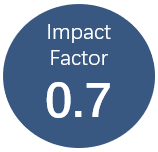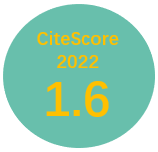Financing infrastructure using floating-interest-rate infrastructure bond
Vol 4, Issue 2, 2020
VIEWS - 1421 (Abstract) 659 (PDF)
Abstract
This paper proposes a floating-interest-rate infrastructure bond, where the interest of a government bond is paid to investors during the period of construction and the early period of operation. Unlike the usual government bond, which provides a fixed interest rate, the proposed floating-interest-rate infrastructure bond pays a floating interest, the rate of which depends on spillover tax revenues. Effective infrastructure projects have a positive effect on the economic growth of a region, known as the spillover effect. When user charges and the return from spillover tax revenues are below the fixed rate of the government bond, the interest rate will equal to the fixed rate of the government bond. In this case, investors in the infrastructure will receive interest on the government bond at the minimum rate. As the spillover effect of the infrastructure increases, the rate of return for infrastructure investment will become greater than the fixed rate of the government bond. The success of the floating-interest-rate infrastructure bond depends on the spillover effect and on transparency and accountability. Policy recommendations are provided in this paper on how to increase the spillover effect and improve transparency and accountability.
Keywords
Full Text:
PDFReferences
Abiad A, Rana Hasan R, Jiang Y and Patalinghug E (2020). “The past and future role of infrastructure in Asia’s development”. In: Susantono B, Park D and Tian S (Eds.), Infrastructure Finance in Asia. pp. 1–25. https://doi.org/10.1142/9789811215124_0001.
Azhgaliyeva D and Kalyuzhnova Y (in press). Trans-Caspian Transport Corridor: Infrastructure and Trade.
Eusepi G, Wagner RE and Gu Q (2019). “Introduction to the JIPD Special Issue on Infrastructure”. Journal of Infrastructure, Policy and Development, 3(2): 176. http://dx.doi.org/10.24294/jipd.v3i2.1158.
Hyun S and Yoshino N (2020). “Spillover capture financing for infrastructure projects: Implications for Asia”. In: Susantono B, Park D and Tian S (Eds.), Infrastructure Financing in Asia, pp. 83–111. https://doi.org/10.1142/9789811215124_0004.
OECD/ADBI/Mekong Institute (2020). Innovation for Water Infrastructure Development in the Mekong Region, The Development Dimension. Paris, France: OECD Publishing. https://doi.org/10.1787/167498ea-en.
Rillo AD and Ali Z (2018). “Toward an innovative approach of financing infrastructure in Asia”. Journal of Infrastructure, Policy and Development, 2(1): 87–96. https://doi.org/10.24294/jipd.v2i1.141.
Rowley AH (2020). Foundations of The Future: The Global Battle for Infrastructure. Singapore: World Scientific. https://doi.org/10.1142/11765.
Susantono B, Park D and Tian S (2020). “Introduction”. In: Susantono B, Park D and Tian S (Eds.), Infrastructure Financing in Asia. pp. i– xlviii. Singapore: World Scientific. https://doi.org/10.1142/11688.
Yoshino N (2013). “The background of hometown investment trust funds”. In: Yoshino N and Kaji S (Eds.), Hometown Investment Trust Funds: A Stable Way to Supply Risk Capital. pp. 1–13. Tokyo, Japan: Springer. https://doi.org/10.1007/978-4-431-54309-1.
Yoshino N and Abidhadjaev U (2017a). “An impact evaluation of investment in infrastructure: The case of a railway connection in Uzbekistan”. Journal of Asian Economics, 49: 1–11. https://doi.org/10.1016/j.asieco.2017.02.001.
_____ (2017b). “Impact of infrastructure on tax revenue: Case study of high-speed train in Japan”. Journal of Infrastructure, Policy and Development, 1(2): 129–148. https://doi.org/10.24294/jipd.v1i2.69.
Yoshino N, Helble M and Abidhadjaev U (2018). Financing Infrastructure in Asia and the Pacific: Capturing Impacts and New Sources. Tokyo, Japan: Asian Development Bank Institute.
Yoshino N, Hossain M and Taghizadeh-Hesary F (2020). “Enhancing financial connectivity between Asia and Europe: Implications for infrastructure convergence between the two regions”. Asian Economic Papers 19: 2. https://doi.org/10.1162/asep_a_00773.
Yoshino N, Huang B, Azhgaliyeva D and Abbas Q (2021). Developing Infrastructure in Central Asia: Impacts and Financing Mechanisms. Tokyo, Japan: ADBI Press. https://www.adb.org/adbi/publications/books.
Yoshino N and Pontines V (2015). “The ‘highway effect’ on public finance: Case of the STAR highway in the Philippines”. ADBI Working Paper No. 549. Tokyo, Japan: Asian Development Bank Institute (ADBI). https://doi.org/10.2139/ssrn.2697322.
Yoshino N and Taghizadeh-Hesary F (2020). “Role of SMEs in Asia and the financing challenges they face”. In: Yoshino N and Taghizadeh-Hesary F (Eds.), Unlocking SME Finance in Asia: Role of Credit Rating and Credit Guarantee Schemes. pp. 3–22. New York, NY, USA: Routledge.
DOI: https://doi.org/10.24294/jipd.v4i2.1236
Refbacks
- There are currently no refbacks.
Copyright (c) 2020 Naoyuki Yoshino, Dina Azhgaliyeva, Ranjeeta Mishra

This work is licensed under a Creative Commons Attribution-NonCommercial 4.0 International License.

This site is licensed under a Creative Commons Attribution 4.0 International License.










